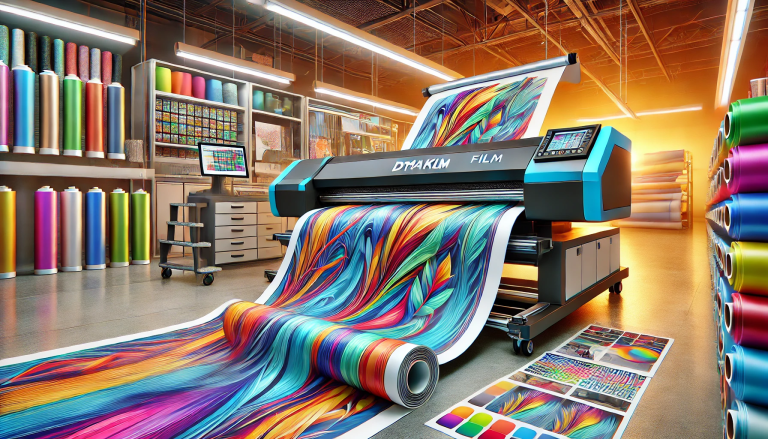“Unveiling the Mechanism of Direct-to-Film (DTF) Printers: A Comprehensive Guide” -MAXDTF- Direct-to-film heat transfer Manufacturer, DTF Film warm peel Supplier, Made in China
Summary:
In this article, we delve into the workings of Direct-to-Film (DTF) printers, a technology that has revolutionized the textile printing industry. We will discuss the basic mechanics of DTF printers, the DTF printing process, a comparison with other textile printing technologies, maintenance practices for DTF printers, and prospects in the realm of DTF printing.
Part 1: Basic Mechanics of DTF Printers
A DTF printer is designed to print high-quality, full-color designs onto a film, which is then transferred to fabric. But how does this machinery work?
At its core, a DTF printer consists of several essential components, including a print head, ink reservoirs, a media feed system, and a heat press. The print head, guided by the printer’s software, sprays DTF ink onto a special film, forming the design.
The ink reservoirs hold the DTF inks, typically separated into CMYK (Cyan, Magenta, Yellow, Key/Black) colors. The media feed system ensures the smooth passage of the film through the printer during the printing process.
Part 2: The DTF Printing Process
The DTF printing process can be broken down into several steps. First, the design is digitally created or loaded into the printer’s software, which translates the design into a format that the printer can understand.
Next, the printer sprays the DTF ink onto a film in the specified design. An adhesive powder is then applied to the printed film. This powder is crucial as it acts as a bond between the ink and the fabric.
The film is then transferred to a heat press. Under the heat press, the adhesive powder melts, causing the ink to bond with the fabric. The result is a durable, vibrant print that can withstand numerous washes without significant fading.
Part 3: Comparing DTF Printing with Other Textile Printing Technologies
DTF printing differs significantly from other popular textile printing technologies. Unlike direct-to-garment (DTG) or screen printing, DTF does not print directly onto the fabric. Instead, it prints on a film first, which is then transferred to the fabric.
This indirect process allows DTF to deliver high-quality prints on a wider variety of fabrics compared to methods like DTG, which works best on cotton. Moreover, DTF offers more flexibility in design complexity and color variations than screen printing, which is better suited for simpler, solid color designs.
Part 4: Maintenance Practices for DTF Printers
To ensure the longevity and optimal performance of a DTF printer, regular maintenance is crucial. This includes cleaning the print head to prevent clogging and checking the ink reservoirs to ensure they are well-stocked and the ink is not dried up.
The media feed system should be checked for any potential blockages or issues that could disrupt the smooth passage of the film. Also, the heat press should be inspected regularly to ensure it’s functioning correctly and providing even heat.
Part 5: Future Prospects in the Realm of DTF Printing
Looking toward the future, DTF printing holds great potential. Advances in printer technology may lead to faster, more efficient DTF printers, capable of delivering even higher-resolution prints.
Furthermore, innovations in DTF ink and adhesive powder may increase the durability and vibrancy of DTF prints, further enhancing the quality of the end product. Eco-friendly inks and adhesives may also become more common, aligning with the increasing focus on sustainability within the textile industry.




